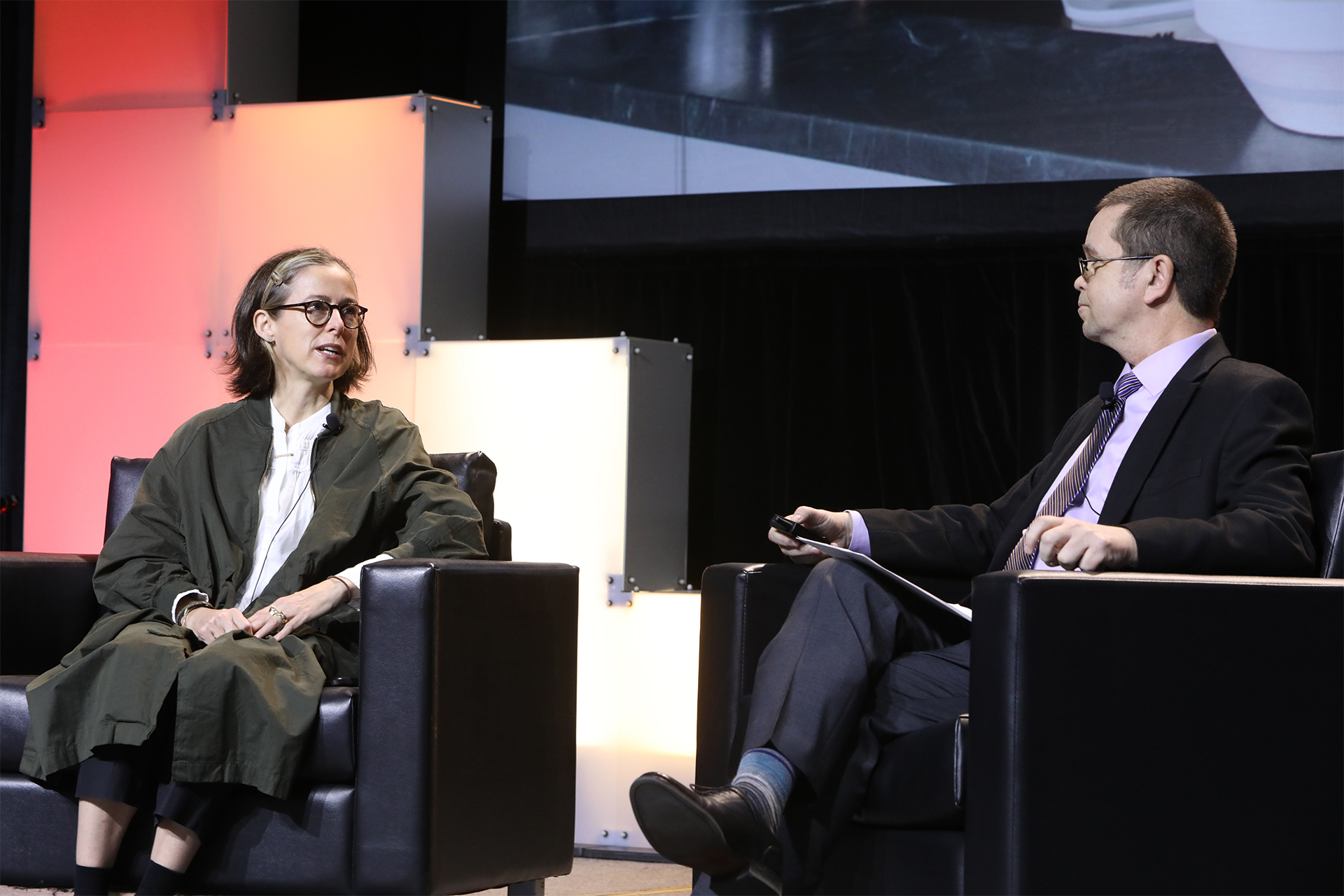An inside look at a trailblazing, consumer-driven home and housewares platform and consumer-driven trend insights took center stage on day two of The Inspired Home Show with the start of the show’s keynote series.
In the midday keynote, Amanda Hesser, co-founder of Food52, served up a detailed and candid account on the origin and dynamic growth and diversification the past dozen years as a first-of-its-kind cooking and home company built on a unique blend of content, community and commerce.
Hesser, in a fireside chat with HomePage News Editor-in-Chief Peter Gianetti, shared insights into how Food52 pioneered the convergence of new digital media resource built on a foundation of user-generated content that now also guides product development, merchandising and marketing to create an untraditional, authentic, dynamic and influential marketplace.
She detailed the ongoing development of the proprietary Five Two housewares brand and acquisitions of Dansk cookware and tableware and Schoolhouse décor business.
Hesser, a former New York Times food writer and author, said access in 2008 (when Food 52 was launched) to high quality recipe and cooking lifestyle guidance a fragmented experience for consumers. There was no all-encompassing single source for such content. There were food magazines, food coverage, commerce companies that sold tools, and tableware, but “There was no one that was pulling it all together for people and making a connection for them as an active resource,” Hesser said.
User-generated content was prevalent and common online; it just wasn’t curated, Hesser noted. No one was committed at the time to leading and providing guidance by melding the discipline of traditional media with crowdsourcing content, she added.
Hesser said Food52 is more than a lifestyle brand; it’s a “lifecycle brand.”
“I feel like lifestyle brand conjures up something that is aspirational, manufactured and unattainable. There is a place for that, but I don’t see us as that brand. We are a happy, helpful companion through your life.”
Hesser cited the slogan behind the company’s proprietary Five Two kitchenware brand: “Made by us, made with you.”
“We’re here with you, we’re listening,” she said, adding the Food52 team also is educating, surprising and entertaining its community of some 25 million followers across all its media platforms. “We are that dynamic friend in your life,” she said.
Hesser recounted the story behind the company’s acquisition of the Dansk kitchenware and tabletop brand from Lenox in 2021. “We pride ourselves on being storytellers with the products,” she said. “The opportunity to bring a beloved brand back to life and set it up for success in the future by setting up with designers to bring new designs and tell those stories.”
She also outlined how the recent acquisition of the Schoolhouse design-driven décor business provides a strong cornerstone for the company’s accelerating expansion of its Home52 vertical. While integrating Schoolhouse is a priority at this time, she said the company continues to explore acquisition targets with a lift from a recent majority investment by TCG Capital.
The authors of the IHA Market Watch kicked off the Sunday keynote program with a preview of the data-based annual report revealing and examining emergent consumer lifestyle factors driving the home and housewares business as the pandemic draws toward its end.
The IHA Market Watch panel included Leana Salamah, vice president, marketing for the International Housewares Association; Tom Mirabile, founder of Springboard Futures; and Joe Derochowski vice president and home industry advisor for The NPD Group. HomePage News Editor-in-Chief moderated the session.
The 2022 IHA Trend Watch frames the consumer with three “C’s” of prevailing lifestyle influences:
Consciousness: The conscious consumer lends careful consideration to why someone selects a given product and company. Areas of focus include health & wellness (with an emphasis on mental and physical wellness), sustainability, social responsibility, time savings and control.
Creativity: The creative consumer seeks out variety, flexibility and learning in their lifestyle. Areas of focus include adaptability, use of space, style/design, experiential value, fluidity and content.
Connectivity: The connected consumer loves bringing things together whether people, technology or brands. Areas of focus include in-home entertaining, social gathering, interpersonal relations, share-ability, smart/digital-forward problem solving; and co-creation.
IHA’s Salamah stressed during the session that consumers shouldn’t be boxed into one of the three factors; rather, consumer spanning generations often represent a cross-section of the three influences.





